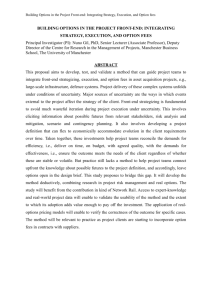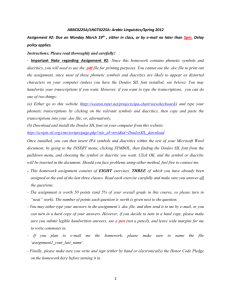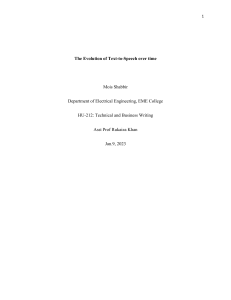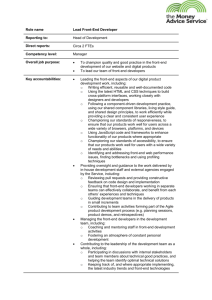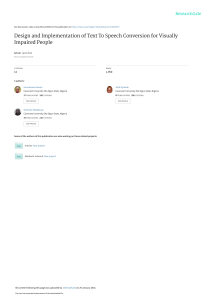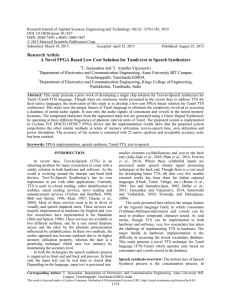Abstract - JP InfoTech
advertisement
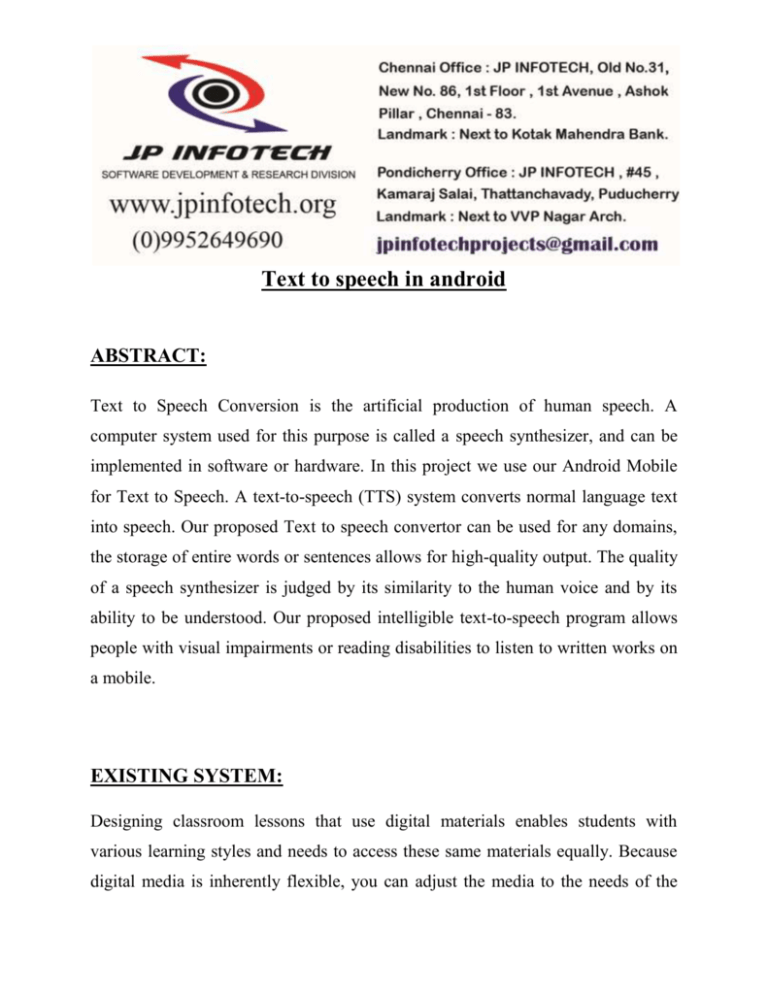
Text to speech in android ABSTRACT: Text to Speech Conversion is the artificial production of human speech. A computer system used for this purpose is called a speech synthesizer, and can be implemented in software or hardware. In this project we use our Android Mobile for Text to Speech. A text-to-speech (TTS) system converts normal language text into speech. Our proposed Text to speech convertor can be used for any domains, the storage of entire words or sentences allows for high-quality output. The quality of a speech synthesizer is judged by its similarity to the human voice and by its ability to be understood. Our proposed intelligible text-to-speech program allows people with visual impairments or reading disabilities to listen to written works on a mobile. EXISTING SYSTEM: Designing classroom lessons that use digital materials enables students with various learning styles and needs to access these same materials equally. Because digital media is inherently flexible, you can adjust the media to the needs of the student. While the focus of this Web resource is how text-to-speech transforms digital text to talking text, keep in mind that you can also transform the way digital text looks – font size, text and background colors, and number of words per page (or screen) for those students needing that support. DISADVANTAGES OF EXISTING SYSTEM: No User friendliness is provided in the application with various controls. Difficult to latest updates and allows users to interact. There is high risk of data mismanagement at any level while the project is being developed. It provides a low level of security with different levels of authentication. PROPOSED SYSTEM: A text-to-speech system (or "engine") is composed of two parts: a front-end and a back-end. The front-end has two major tasks. First, it converts raw text containing symbols like numbers and abbreviations into the equivalent of written-out words. This process is often called text normalization, pre-processing, or tokenization. The front-end then assigns phonetic transcriptions to each word, and divides and marks the text into prosodic units, like phrases, clauses, and sentences. The process of assigning phonetic transcriptions to words is called text-to-phoneme or grapheme-to-phoneme conversion. Phonetic transcriptions and prosody information together make up the symbolic linguistic representation that is output by the front-end. The back-end—often referred to as the synthesizer—then converts the symbolic linguistic representation into sound. In certain systems, this part includes the computation of the target prosody (pitch contour, phoneme durations) which is then imposed on the output speech. ADVANTAGES OF PROPOSED SYSTEM: A wide variety of learners in school and at home use text-to-speech (TTS) technology to gain access to important information. Those who use, or help others use TTS, background information about the technology, ideas for how to use it, and information about acquiring digital text. MODULES Text Input Voice Ouput MODULE DESCRIPTION: Text Input: In this module, the system will get input as text. In this we have the text editor. We will first create a object for text editor for conversion. After sent SMS to desired recipient we need to update the message content to view and retry the sent SMS in the user SMS database. Voice Output: Voice Output is the translation of text to spoken words. It is also known as "automatic text recognition", "ATR". Our system analyze the specific words and use it to fine tune the recognition of that person's speech, resulting in more accurate transcription. The best part of the project is user no need to speak the message, just enter the message he want to send, it simply speak the message content then the voice will be converted. In this module we getting voice output from the system, we will process the and recognize the text then show it to user. SYSTEM REQUIREMENTS: HARDWARE REQUIREMENTS: System : Pentium IV 2.4 GHz. Hard Disk : 40 GB. Floppy Drive : 1.44 Mb. Monitor : 15 VGA Colour. Mouse : Logitech. Ram : 512 Mb. MOBILE : ANDROID SOFTWARE REQUIREMENTS: Operating system : Windows XP/7. Coding Language : Java 1.7 Tool Kit : Android 2.3 ABOVE IDE : Eclipse


